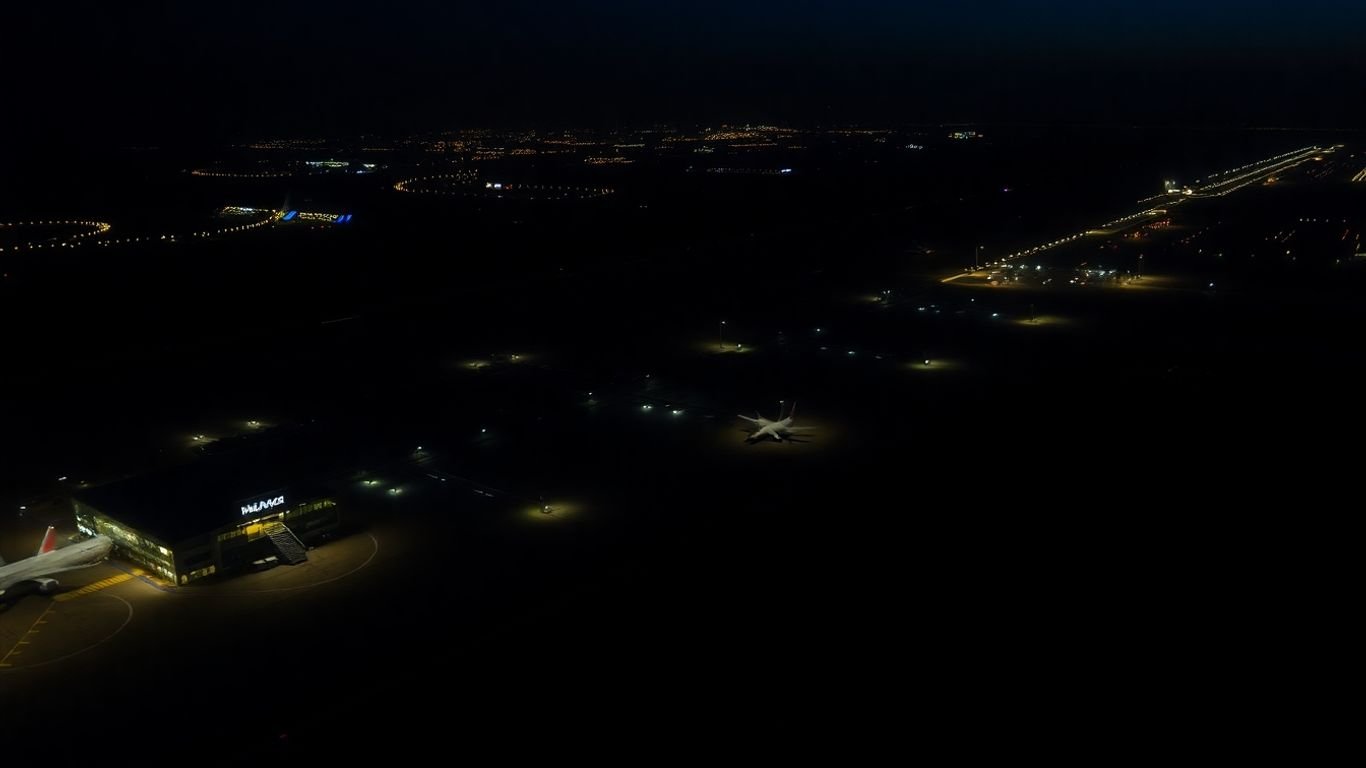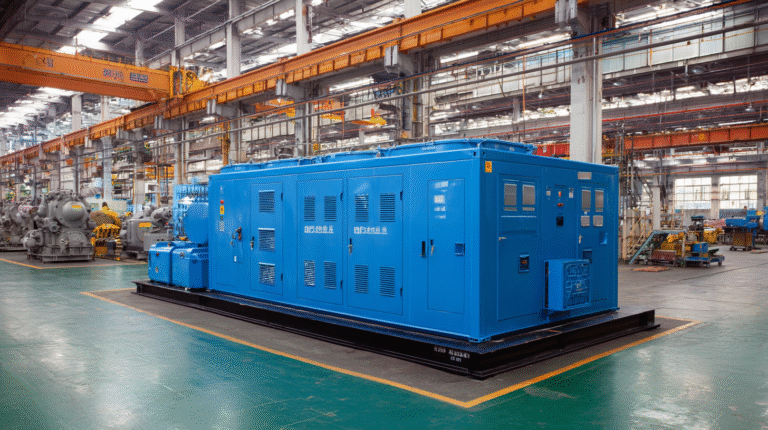Santo Domingo’s Las Américas Airport Faces 12-Hour Power Outage
Well, it seems like things got pretty chaotic at Santo Domingo’s Las Américas Airport recently. There was a major power outage that lasted for ages, messing up flights and leaving a whole lot of people stranded. It’s not just the airport, either; apparently, there have been widespread power issues around the city too. This whole situation has everyone talking about what went wrong and what needs to be done to fix it, especially when it comes to keeping the airport running smoothly and dealing with the fallout.
Key Takeaways
- The Las Américas Airport experienced a significant power outage lasting over nine hours, impacting around 5,000 passengers and 47 flights.
- The failure was reportedly due to a faulty circuit breaker or medium-voltage switch, not a loss of power from the national grid, making the concessionaire Aerodom responsible.
- Aerodom has been ordered to pay $5 million to the Dominican State for damages and cover compensation for passengers and airlines affected by the power outage.
- The airport concessionaire must complete mandated electrical system improvements within three months to prevent future incidents.
- This incident highlights broader power reliability issues in Santo Domingo, with residents also reporting prolonged blackouts and service interruptions.
Las Américas Airport Power Outage Details

Duration and Impact of the Power Outage
On a recent Sunday, Las Américas International Airport (AILA) experienced a significant power outage that lasted for over nine hours. This wasn’t just a minor inconvenience; it really threw a wrench into operations. The blackout affected approximately 47 flights and around 5,000 passengers, leaving many stranded and unable to reach their destinations. The disruption started in the morning and continued throughout a good chunk of the day, causing widespread confusion and frustration among travelers. It’s the kind of event that makes you rethink your travel plans.
Root Cause of the Electrical Failure
So, what exactly went wrong? Investigations pointed to an internal issue within the airport’s electrical system. Specifically, a circuit breaker, which is supposed to manage and distribute the electrical load, failed to function correctly. This piece of equipment is pretty critical for keeping the lights on and everything running. While the national grid’s power supply remained stable, and the airport’s own emergency generator system was technically operational, the faulty breaker prevented the main terminal building from receiving power. It seems like a single component can cause a lot of trouble.
Emergency Generator System Performance
When the main power went out, the airport’s emergency generator system was supposed to kick in. Reports indicate that the generators themselves were operational, but the failure in the distribution system meant they couldn’t energize the main building. To get things back up and running, the airport had to bring in and connect two external generators in stages. This workaround was necessary to restore essential services and gradually bring operations back online. It highlights a potential weakness in how backup power is integrated with the primary systems, especially when a key component like a switch fails. The airport has since returned to normal operations after this prolonged power outage.
The failure originated from a collapse in the medium-voltage switch assembly in the north terminal, compounded by the unavailability of a backup circuit. This points to a significant maintenance lapse.
Here’s a quick look at the timeline and impact:
- Outage Start: Sunday morning
- Duration: Over 9 hours
- Flights Affected: Approximately 47
- Passengers Impacted: Around 5,000
- Primary Cause: Faulty circuit breaker/switch assembly
Response and Financial Repercussions
The aftermath of the 12-hour power outage at Las Américas International Airport (AILA) has brought swift action and significant financial consequences for the airport’s concessionaire, Aeropuertos Dominicanos Siglo XXI (Aerodom). The Dominican Airport Commission has stepped in, reviewing preliminary reports and issuing directives aimed at accountability and future prevention.
Governmental Review and Penalties
Following the extensive disruption, a multi-agency investigating commission, comprising technicians from the Ministry of Public Works, Ministry of Energy and Mines, the Airport Department, the Dominican Institute of Civil Aviation (IDAC), and the Specialized Airport Security Corps, has been tasked with a thorough review. Their preliminary findings point to a failure within Aerodom’s own medium-voltage electrical infrastructure as the sole cause of the blackout. This has led to a significant financial penalty.
The Airport Commission has ordered Aerodom to pay the Dominican State a sum of $5 million dollars. This penalty is intended to cover the damages incurred by passengers and airlines due to the prolonged outage. Furthermore, Aerodom has been formally notified of the need to strictly adhere to its contractual obligations, specifically Article 8.2.2. of the Concession Agreement. The commission also recommended immediate structural improvements to the airport’s electrical system, with a strict three-month deadline for completion to bolster operational reliability.
Compensation for Passengers and Airlines
Aerodom is not only facing penalties from the state but also the responsibility of compensating those directly affected. The concessionaire will have to cover the costs associated with the losses suffered by passengers and airlines during the interruption. This includes, but is not limited to, costs incurred from flight delays, cancellations, and the general inconvenience caused to over 5,000 passengers who were directly impacted. Airlines like Delta, JetBlue, and Arajet had to reschedule flights, leading to long queues and considerable frustration at the terminal. The aim is to address the inconvenience and financial impact experienced by travelers due to the incident. compensation for passengers
Mandated Electrical System Improvements
Beyond immediate penalties and compensation, the government is mandating significant upgrades to AILA’s electrical infrastructure. Aerodom has been instructed to submit detailed electrical plans and an official report of the incident within 48 hours. A key directive is the reinforcement of the terminal’s crisis management protocols. Most importantly, a structural intervention of the AILA electrical system is required. This overhaul is not optional; it must be completed within a maximum of three months. The goal is to significantly increase the reliability of airport operations and prevent any recurrence of such disruptive incidents. This proactive measure is designed to safeguard future operations and passenger experience.
The investigation confirmed that the national grid supply and the airport’s internal emergency plants were operational. The failure originated from a transmission cable feeding the north terminal, placing the responsibility squarely on Aerodom’s maintenance practices. While the control tower and runway remained functional due to an alternate system, restoring full services in the north terminal required the temporary use of external generators and a phased reactivation of operations.
Broader Power Issues in Santo Domingo
It seems the power problems aren’t just confined to the airport. Many residents across Greater Santo Domingo have been dealing with significant electricity problems Dominican Republic for a while now. Complaints about prolonged blackouts and constant interruptions have been piling up, affecting daily life and causing a lot of frustration. Some neighborhoods have reported being without power for over 20 hours, with others experiencing fluctuating service even on circuits that are supposed to be continuous.
Widespread Blackouts in Residential Areas
Residents in areas like Invivienda, Amanda I, Ciudad Juan Bosch, El Brisal, and Villa Faro have voiced their concerns loudly. Reports indicate outages lasting from late Thursday night through Friday, and in some cases, even longer. This isn’t just an inconvenience; it’s disrupting businesses, spoiling food, and making it tough to keep essential devices charged. The impact on Santo Domingo travel delays can be significant when people can’t even rely on basic services at home.
Customer Complaints Regarding Service
Beyond just the blackouts, people are also unhappy with their electricity bills, which they feel are too high, especially given the unreliable service. There are also worries about appliances getting damaged due to the constant power surges and drops. It’s a double whammy: paying more for less reliable power and risking expensive equipment damage.
Distributor Explanations for Interruptions
When contacted, electricity distributors often point to specific incidents. For example, one major distributor cited a damaged utility pole on Charles de Gaulle Avenue, caused by a vehicle, as the reason for interruptions in several eastern sectors. They also mentioned breakdowns due to recent storms as contributing factors. While these explanations address specific events, they don’t always satisfy residents who have been experiencing these issues repeatedly. The existing grid infrastructure, designed for centralized power generation, requires substantial upgrades to accommodate distributed energy resources and the two-way flow of electricity, slowing down the integration of neighborhood-level power initiatives. local energy projects face hurdles.
| Area Affected | Reported Outage Duration | Notes |
|---|---|---|
| Invivienda | > 20 hours | Continuous since Friday morning |
| Ciudad Juan Bosch | ~ 28 hours | Thursday evening to Friday night |
| El Brisal | ~ 13 hours | Friday morning to Friday afternoon |
| Amanda I & Villa Faro | Multiple interruptions | Fluctuating service, prolonged blackouts |
Airport Infrastructure and Reliability
The recent 12-hour power outage at Las Américas Airport has really brought to light some serious questions about the airport’s infrastructure and how reliable it actually is. It’s not just about the lights going out; it’s about what that means for everything else that keeps an airport running smoothly.
Instrument Landing System Deficiencies
It turns out the Instrument Landing System (ILS) here has been having issues for a while. Specifically, the ‘glide path’ component, which is super important for guiding planes down to the runway, has been broken for years. This isn’t just a minor inconvenience; it means that when visibility gets bad due to fog or heavy rain, planes can’t land safely. They have to get diverted to other airports, which causes a lot of problems for airlines and passengers alike. Think about the extra costs, the delays, and the general hassle. It’s a pretty big deal when a key piece of safety equipment isn’t working.
Consequences of Poor Visibility Conditions
When the ILS isn’t fully functional, especially the glide path, poor visibility conditions become a major headache. Flights get diverted to places like Punta Cana or even San Juan, Puerto Rico. This isn’t just a little detour; it’s a significant disruption. For airlines, it means extra fuel, crew time, and passenger rebooking. For travelers, it’s missed connections, lost time, and a lot of frustration. Pilots can also be affected, sometimes exceeding their flight hour limits, which then requires mandatory rest periods, further complicating schedules. It really highlights how dependent air travel is on reliable ground systems.
Delays in Airport System Upgrades
What’s really frustrating is that these problems, like the ILS issues and now the power outage, seem to stem from a lack of timely upgrades and maintenance. There have been meetings and promises about improvements, but things just don’t seem to get done. It feels like there’s a planning problem, where necessary upgrades aren’t prioritized until something goes wrong. This kind of delay in addressing infrastructure needs, including Infrastructure Mitigation, can lead to bigger problems down the line, as we’ve just seen. It makes you wonder what else might be overlooked. The airport has seen new terminals and cargo facilities, but the core systems need constant attention too.
Investigating the Airport Power Outage

The recent 12-hour airport electricity disruption at Las Américas International Airport (AILA) has sparked a thorough investigation into the causes and responsibilities. This incident, which significantly impacted airport operations affected by outage, has led to the formation of a special commission tasked with understanding exactly what went wrong and how to prevent it from happening again. The focus is on pinpointing the failure within the airport’s own electrical infrastructure, as initial reports suggest the national grid remained operational.
Composition of the Investigating Commission
The commission brought together a range of experts to get to the bottom of this. It included technicians from the Ministry of Public Works, the Ministry of Energy and Mines, and the Airport Department. Representatives from the Dominican Institute of Civil Aviation (IDAC) and the Specialized Airport Security Corps were also part of the team. They even brought in some outside advisors to ensure a comprehensive review.
Impact on Passengers and Flight Schedules
This wasn’t just a minor inconvenience; it caused real problems for thousands of people. Over 5,000 passengers were directly affected, leading to a cascade of flight delays and cancellations. Airlines like Delta, JetBlue, and Arajet had to scramble to reschedule flights, which resulted in long lines and frustrated travelers at the airport counters. The disruption happened right at the start of a busy travel day, making things even worse.
Aerodom’s Responsibility for Maintenance
Aeropuertos Dominicanos Siglo XXI (Aerodom), the company that manages the airport, is now under scrutiny regarding its maintenance duties. The investigation is looking closely at Aerodom’s role in the failure, especially since there had been some smaller technical issues before this major blackout. The government has made it clear that it expects better reliability from such a key national asset. The preliminary findings point to a failure within Aerodom’s medium-voltage equipment, specifically a cell-disconnecting switch assembly, and a lack of a functioning backup circuit. This has led to a demand for Aerodom to compensate the state and passengers for the damages incurred.
National Grid and Generation Status
The national electricity grid experienced some strain recently, though generation capacity itself wasn’t the primary issue. The Punta Catalina Thermoelectric Power Plant, a significant contributor to the country’s electricity supply, had a temporary shutdown due to a mechanical problem. Thankfully, it’s back online now. Representatives from the power generation companies have stated that their systems are running smoothly, with available synchronized power exceeding demand. They point to issues within the distribution network as the main cause for the recent blackouts affecting various parts of Santo Domingo. This means the electricity is being generated, but it’s not always reaching homes and businesses reliably.
Thermoelectric Plant Operational Status
The Punta Catalina Thermoelectric Power Plant (CTPC) recently had a brief operational pause. A failure in a rubber gasket caused it to disconnect from the national grid. This plant normally accounts for a substantial portion of the country’s electricity. However, authorities confirmed that the plant resumed normal operations shortly after the incident.
Electricity Generation Availability
According to sources within the electricity generation sector, the overall generation system is functioning as expected. For the past few days, the synchronized availability of electricity has consistently been higher than the demand. This surplus suggests that the problem isn’t a lack of power being produced, but rather how it’s being managed and delivered.
Attribution of Blackouts to Distribution Failures
Power generation companies are attributing the widespread blackouts to problems within the electricity distribution infrastructure. They argue that while generation capacity is sufficient, failures in the distribution system are preventing the steady flow of electricity to consumers. This points to a need for upgrades and better maintenance in the lines and substations that carry power from the plants to the end-users. The consistent 60 Hz power required for many facilities, especially those relying on generators or emergency power supply systems, can be disrupted by these distribution issues.
The current situation highlights a disconnect between power generation and reliable delivery. While enough electricity is being produced, faults in the distribution network are leading to service interruptions for many residents and businesses across the city.
Moving Forward After the Blackout
So, the big power outage at Las Américas International Airport is mostly sorted now, with things getting back to normal. It was a pretty rough day, though, messing up flights for thousands of people and causing a lot of headaches. The airport folks are looking into exactly what went wrong with that circuit breaker, and they’ve promised to make sure it doesn’t happen again. They even had to bring in extra generators to get everything running again. It’s a good reminder that even at busy places like airports, things can go wrong, and it really shows how much we rely on electricity for everything to work smoothly. Hopefully, they’ve learned from this and put better backup plans in place.
Frequently Asked Questions
How long was the power outage at Las Américas Airport?
The power outage at Las Américas International Airport lasted for more than nine hours on a Sunday. This caused significant disruptions to airport operations.
What caused the power outage at the airport?
The main reason for the power outage was a faulty circuit breaker, which is a piece of equipment that helps control the flow of electricity. This specific part failed, preventing power from reaching the main building, even though the airport’s backup generators were working.
Did the airport have backup power?
Yes, the airport has an emergency generator system. However, due to the specific failure of the circuit breaker, the backup power couldn’t be fully used to energize the main terminal building.
What was the impact of the outage on travelers?
The outage affected about 5,000 passengers and 47 flights. Many travelers experienced delays or had their flights canceled, leading to long lines and confusion at the airport.
What are the consequences for the airport operator, Aerodom?
Aerodom, the company that manages the airport, has been ordered to pay $5 million to the Dominican State for the damages caused. They are also responsible for compensating passengers and airlines for their losses and must make significant improvements to the airport’s electrical system within three months.
Are there other power problems in Santo Domingo?
Yes, there have been widespread power outages reported in various neighborhoods around Santo Domingo. Residents have complained about long periods without electricity, sometimes lasting over 20 hours, and issues with fluctuating power supply.








